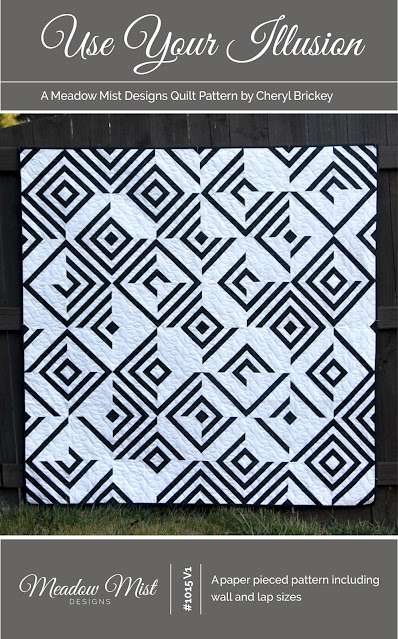I just released my newest pattern Wishing Star on Friday and I have had a lot of quilters love the design but not feel like they are up to tackling a more advanced foundation paper pieced design. I would love to share some tips and tutorials that would help them up their FPP game.
8 TIPS FOR SUCCESSFUL PAPER PIECING
1. Start Small and Simple -Choose patterns with larger sections, fewer pieces, and most importantly easier angles. This helps you focus on mastering the basics without becoming overwhelmed.
2. Cut Fabric Generously -
Always cut your fabric pieces larger than the section they will cover. This gives you room for error and reduces frustration. Many times a pattern will give you the suggested piece cut sizes. Be sure to only cut enough pieces to make one block or section to make sure they are not too small or large before cutting all of the fabric.
3. Use a Short Stitch Length -
Set your sewing machine to a stitch length of 1.5–2.0. Smaller stitches perforate the paper more, making the paper easier to remove while ensuring strong seams.
4. Test Your Fabric Placement -
Before sewing, hold the fabric up to the light or fold it along the seam line to ensure it covers the area with seam allowances included. This is especially important in those trickly angled pieces.
5. Work in Good Light -
Adequate lighting helps you see fabric placement and alignment clearly, especially when working with light or translucent fabrics. Holding your block to a window (or using a light box) allows you to see fabric placement through the paper.
6. Trim as You Go -
After sewing each section, trim the seam allowances to 1/4". This reduces bulk and keeps the block flat for easier assembly.
7. Secure with Glue or Pins -
Use a washable glue stick or a few pins to hold your fabric in place before sewing. This prevents slipping and ensures accurate placement. I sometimes use a tiny dab of glue to hold my first piece of fabric and will occasionally use pins on additional pieces. Be sure not to sew over the pins.
8. Keep Extra Templates Handy -
Print or copy extra templates before you start. We all make mistakes and it’s nice to have spares without interrupting your progress.
9. (Bonus) Enjoy the Process -
Take your time, embrace mistakes, and appreciate the precise, intricate results that FPP offers. Quilting is as much about the journey as the finished product.
FAVORITE FPP VIDEO TUTORIALS
Paper piecing can be kind of tricky to figure out in the beginning and I think that video tutorials are a great way of learning and seeing the technique in action. There are many full in-person and online classes around FPP. Here are two of my favorite free YouTube beginner level tutorials:
Foundation Paper Piecing Tutorial by A Quilting Life
BEGINNER LEVEL PAPER PIECING PATTERN
The pineapple block I feel is one of the best beginner blocks to start with. There are easy angles and just one template per block (so no having to match seams while sewing the template sections together). I offer my Kona Pineapple Block free to all of my newsletter subscribers.
If you would like to join my newsletter, you can join right here.
MEADOW MIST DESIGNS FPP PATTERNS
I have a number of FPP patterns in my shop ranging from easier to more challenging. I am even working on another FPP pattern right now :)
QUESTIONS OR OTHER TOPICS?
Do you have any questions or topics I could cover to help you along your foundation paper piecing (or quilting in general) journey? Please leave them as a comment or email me at cheryl@meadowmistdesigns.com.
















Pressing after adding each piece is really important too!
ReplyDeleteAbsolutely. I bought a tiny iron for this - although the tiny irons do not get very hot (still burn but not heavy enough to really press) I love the precision I get with pp. Did a skunk once - over 200 pieces in his tail and final block was only 9 x 9" Thanks for all the tips!!!!
DeleteGreat tips and resources, Cheryl! I personally set my stitch length around 1.2 when I'm paper piecing since I generally piece around 2.0, haha. :)
ReplyDeleteThose are great tips.
ReplyDeleteGreat tips. I like paper piecing, but you have to take it slow and just enjoy the process.
ReplyDeleteGee, so nice of you to give us all this information and a free pattern too. I tried paper piecing once, a bit confusing. This time, with your advice and the links to the tutorials you provided, I'm going to give it another go. I think I'll succeed this time. Thank you, Barbara
ReplyDelete